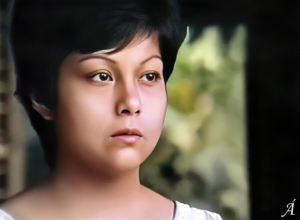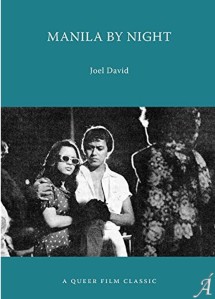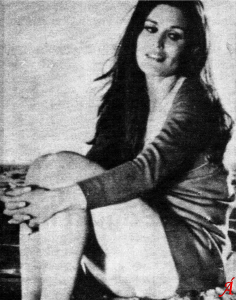TOWARD A MORE RESPONSIVE CRITICAL PRACTICE
[Click here for the previous (opening) installment. To go to the following sections, click here: Continuities; Final Category; Filmic Implications; Notes & Works Cited. An Appendix is posted separately.]
Before concluding our consideration of the applicability of what has proved to be an effective and engaging, though admittedly difficult, set of prescriptions from an avowedly progressive Western sector, I ought to stress that the goal here is not to substitute one set of left-appropriated dogmas (either the orthodox left’s or the FFCC’s) with another. Rather, the goal is to explore a new, necessarily open-ended approach to see what destinations it might lead to, not just for Filipino critics but for local practitioners as well.
11011In the previous half, we considered the types of films that Comolli and Narboni warned against accepting wholesale – those that unironically uphold reactionary material using conventional technique. They caution that even with “political” subject matter (as well as the “realist” orientations advanced by advocates of cinéma-direct, promoted in the Philippines by the UPFI’s predecessor, the UP Film Center), the uncritical adoption of standardized narrative treatments and the assumption that the depiction of what is real is capable of presenting truth: these need to be regarded as complicit with the arsenal of tricks used by the dominant ideology to maintain the delusive goal behind acceptable capitalist entertainment, which is to lull audiences into accepting the certainties that their respective social spheres assure them as the reality they recognize and operate from within.
11011Hence the authors’ opprobrium regarding artists who identify as progressive but who fail to realize that any alternative they set up to replace the system they rail against “takes no account of the fact that any other system is bound to be a reflection of the one [they wish] to avoid.” In much the same way, they assert that “every film is political” (underscoring theirs), which makes it essential to create a category to problematize films “which have an explicitly political content … but which do not effectively criticize the ideological system in which they are embedded because they unquestioningly adopt its language and its imagery.” This categorization would suffice to apply to the general run of nearly all the movies identified as explicitly or metaphorically against the historic martial-law dictatorship, whether made during the Marcos regime or afterward, regardless of the responses of the FFCC or European film festivals. The only challenge here would be to point out how and why these texts fall short.
11011As I also strove to demonstrate previously, not all such attempts failed. But the recognition provided by local taste-mongers would prove to be inadequate barometers of these film samples’ worth: some garnered limited rewards, many more passed under the radar, so to speak, and in a few cases even endured disapprobation from people who should have known better. The case of our most avowedly political filmmaker, Lino Brocka, is instructive: his exposure to an arena of exhibition and distribution that rewarded him for conforming to its idea of what a proper Third-World artist should be, merely served to delay his own growth as practitioner. But even with his too-short persistence into the post-Marcos era, Filipino filmmakers were afforded a useful model for emulation, or even resistance.
It is in this recognition of Brocka’s own martial law-era discourse extending beyond the first Marcos presidency that we find works like the contemporary contending releases, one favoring and the other disavowing the era of military dictatorship. (The psychosis that induces an artist to believe that any instance of tyranny can be justified deserves its own separate treatment, which this article unfortunately cannot cover satisfactorily; the forces of reaction may resolve to find ways to upgrade their own aesthetic practice, which is tantamount to an oxymoronic pursuit, but the goal for progressive players is to leave them behind, rather than match their mediocrity.)
11011A few locally produced post-Marcos-era texts may be regarded as incontrovertibly fulfilling the requirement of simultaneously challenging both ideological material and ideological form, in effect honoring the legacy of the Second Golden Age practitioners better than most academic write-ups and formal recognition mechanisms (here or in Europe – same difference) have been able to do. Once more, we need to exercise caution in going over these samples: a couple succeeded in garnering institutional honors, but the rest continue to reside in a limbo that local critics have been unable to break open because of their tendency, per Comolli and Narboni, to aim “either for speculation (commentary, interpretation, de-coding even) or for spacious raving[1] … [rather than providing] a rigidly factual analysis of what governs the production of a film (economic circumstances, ideology, demand and response) and the meanings and forms appearing in it, which are equally tangible.”
11011Hence the admittedly delimited practice of post-Marcos “martial-law cinema” will benefit from the close evaluation of works like Chito S. Roño’s Curacha: Ang Babaeng Walang Pahinga (1998), intended as a sequel of the same director’s Marcos-era debut, Private Show (1984), but opening with an unexpectedly marvelous incident that implicitly juxtaposes the Catholic establishment’s seizure of political power with military rebels’ less-successful attempts; Mario O’Hara’s Pangarap ng Puso (2000), a fabular tale that proceeds to subvert historical perception alongside its characters’ political radicalization; Jeffrey Jeturian’s Tuhog (2001), the realization of a script originally intended as a production of the Marcos film agency, which exposes the manner in which sex films bastardize their underprivileged real-life source materials for the sake of maximizing lucrative sensationalism; Khavn’s Balangiga: Howling Wilderness (2017), a dramatization of the country’s first 20th-century colonization trauma that focalizes the unbearable via the perspective of a child responding to his infernal environment with wonderment and courage and heartbreak; and Brillante Ma Mendoza’s Resbak (2021), an ostensibly standardized staging of the impact of bureaucrat-capitalist corruption on a typical slum resident that builds up to the title’s realizable vision of retributive justice in the face of the social order’s self-restoration. For a cinéma-direct sample, I can only name for now a special case, Ellen Ongkeko-Marfil’s Indigo Child (2016), the coverage of a play on military torture wherein the psychiatrically damaged victim’s accounts are complemented by digital mediations that raise essential questions of historical credibility.
11011One may insist on a dogmatic reading of the Cahiers du Cinéma editorial in order to point out a number of other titles I overlooked. At this stage, however, it would be expedient to foreground an assumption whose ubiquity could be taken for granted in French cinema – so much so that it did not have to be articulated beside the many other words of caution specified by the authors. This would be the relative affordability of film production in the First World, coupled with the reliability of film subsidy and patronage in Europe. As a result, a wide array of film practice would be more financially viable in the specific historical context that the article addresses – a condition that the contemporary digitalization of film comes close to approximating, though still with vital differences in place.
11011Hence the added criterion that I took pains to observe, for which I consistently get denounced by apologists for the UPFI/FFCC axis: the requisite of popular appeal or, as perfectly phrased by a Pinay filmmaker, observing a non-negotiable respect for the mass audience[2] (it can never be emphasized enough that capitalists should be allowed to recover their expenses only as a strategic measure, to be able to finance more projects). Not all works that follow this principle garner commercial success, inasmuch as the elements that factor into this type of result are actually rarely perfectly conducive with one another. Yet we should insist on recognizing and respecting any instance where a filmmaker intends to ensure that her production project recover its cost, and once more, just to be clear: not as a means of enriching her investor, but for the sake of maintaining the continuation of production activity.
11011Nevertheless, in what should be regarded as an unnatural, opportunistic, yet also ultimately workable option, a privileged circle of Filipino practitioners has been able to parlay the support of the film-culture elite in Pinas (usually working in conjunction with European filmfest impresarios) into sustaining the production of a series of deliberately alienating material that purports to provide political or historical discourse. Understandably, global scholars without immediate access to Philippine popular culture will have no other choice except to work through this type of output. Filipino scholars who do the same are exercising their right to write according to their preference, but we should hesitate in accepting their claim to progressivity, regardless of the frameworks and buzzwords they trumpet. For if a Philippine practitioner has been able to convince Western (or Westernized) investors that they could assuage their postcolonial guilt by throwing money at a film project that has minimal or no chance of earning back its expense, then that may be counted as a separate though minor victory all its own, with concomitant Western acclaim as frosting on the madeleine. Critics groups might believe that some glamour rubs off on them when they mimic Western award-givers, but the only historical question that must be asked here is devastatingly simple: how authentic is a product that makes use of native elements but guarantees that only non-natives will be able to tolerate it?
A corollary to this concern for popular acceptance is the manner in which films that belong to the very first category mentioned by Comolli and Narboni – where they described the majority of film productions as belonging to this order of output that neither politicizes its material nor devises ways to expose, if not subvert, the mechanisms of ideology – should be treated. In the era of new media, when the possibility of comprehensive commentary has become increasingly realizable, the act of dismissing an entire group of entries should not be regarded as tantamount to ignoring them altogether. What should be cultivated by what they termed scientific criticism is discursive action, with activism always a potential ideal. A textual failure, for example, requires that film critics “look into the way the ideological system and its products merge at all levels: to study the phenomenon whereby a film being shown to an audience becomes a monologue, in which the ideology talks to itself.”
11011In fact, Comolli and Narboni prescribe a more passive response to their fifth category (out of seven – the final two were covered in the previous section): “we have absolutely no intention of joining the current witch-hunt against [these films]…. They criticize themselves, even if no such intention is written into the script, and it is irrelevant and impertinent to do so for them. All we want to do is show the process in action.” The advantage of hindsight allows us to see that the more mature a national industry has become, the more films than in any category, other than the first, wind up in this category. Unsurprisingly, these films could be mistaken by careless observers as classifiable in the first category, “at first sight [belonging] firmly within the ideology and to be completely under its sway, but which turn out to be so only in an ambiguous manner. For though they start from a non-progressive standpoint, ranging from the frankly reactionary through the conciliatory to the mildly critical, they have been worked upon, and work, in such a real way that there is a noticeable gap, a dislocation, between the starting point and the finished product.”
11011The article’s elaboration on this category, about as long as the first one, turns on an awareness and acceptance of deconstructive principles. This places young Filipino critics at a grave disadvantage, since this now-standard Western approach still has to be introduced in the country’s secondary and core university curricula. Intensive self-study in poststructural philosophies and methods should therefore be part of the basic training for aspiring critical practitioners, inasmuch as the right-wing clericalist domination of Philippine education still has to be dismantled.[3] Other historical and theoretical contexts presumed in the article will also have to be pursued more intensively in specialized film studies, starting with the film-realist concepts of André Bazin and the politique des auteurs of the New-Wave participants in Cahiers du Cinéma (already mentioned in the previous section’s historical contextualizing).[4] All of these will have to be worked through even before the study of deconstruction can be initiated, which in turn will bring the serious critic up to date on the theoretical concepts in film theory right after Bazin effectively declared an end to concerns with the specificities of the medium.
11011For these reasons I would recommend caution in navigating the two opposed tendencies we find in politicized Philippine film criticism: either a leapfrogging from the humanist pseudo-Marxism underlying the auteurism that enables critics everywhere to imagine themselves in conversation with the global film community, to contemporary abstractions in identity or intersectional activism, usually adopted without the authors’ appreciation of how these were rooted in a now seemingly distant call to read Marxist texts anew and reconfigure these discoveries in the constantly evolving present, thereby enabling right-wing cooptation; or a return to some form of Marxist orthodoxy, usually affirmed by organizational practice, with necessarily a resolute denial of how circumstances in the specific ideas’ historical context exposed the weaknesses and inadequacies of the ideas in question, and how these had to be replaced with more useful applications. As usual in materialist cultural studies, a tracking of the circuits of pelf and power will reveal which critical institutions benefit from these twin regressive ideologies of auteurism and high-brow aestheticization of film discourse; concerned critical thinkers owe it to themselves, the mass audience, and outstanding practitioners, to identify the UPFI/FFCC and call to question its members’ claims to progressive credibility, instead of allowing the axis to trap them in an unnecessary, unproductive, and unending orbit.
All this hemming and hawing on my end though is in fact a prelude to a final spot of brightness. Despite the editorial authors’ near-virtual dismissal of films in this fifth group (sometimes called “category e” – see Appendix), the study of these types of works and the artists who created them has constituted the largest body of film criticism in the West’s politicized journals. It provided an impetus for revaluating the earlier Cahiers batch members’ appreciation of the works of Alfred Hitchcock as well as their recuperation of B-(and lower-)film productions. The challenge is something that only genuine film connoisseurs will be able to welcome, rather than fraudsters who make a pretense at upholding outmoded political ideals and use their commitments as an excuse to spend as little time as possible in repeatedly watching entries that they admit fondness for, delving into the films’ production circumstances, inspecting how these apparatuses reconfigure themselves as transmitters of pleasure, querying how their appreciation of the films’ political achievements matches or departs from the audiences’ response, and so on.
11011One means by which these types of more definitively materialist and observational criticism can be facilitated is via a more intensive awareness of the political economy of the studios and governmental institutions responsible for film production and policy implementation. Even in the instance of “Cinema/Ideology/Criticism,” this lack was immediately noted, critiqued, and addressed by Western film scholars. The not-so-great news for progressively inclined Filipino critics is that these studies will also have to be undertaken, if we desire to have more solid grounding for the practice of post-canonical, anti-auteurist, genuinely politically responsive film appreciation in the Philippines.
Notes
The idea of using the Cahiers du Cinéma editorial to critique the state of Pinas film criticism stemmed from intensive discussions with the participants of Writing Pinas Film Commentary, a short online course held during March-April 2022; thanks to enrollees Manuel A. Alindogan Jr., Ace Balbarez, Roland Cartagena, Luna Sicat Cleto, Christine Marie L. Magpile, Homer B. Novicio, Ryan Oquiza, Josh Paradeza, and Jianne Piguing, and auditors Jerrick Josue David, Ellen Ongkeko-Marfil, and Raffy Tejada. The article is for unaffiliated Philippine film critics, among whom Jojo Devera, Epoy Deyto, and Mauro Feria Tumbocon Jr. have continued to provide me with useful insights over the years. I can only keep hoping that my output becomes worthy of the high standards they maintain for themselves.
[1] This may have been a typo for “specious,” although the non-literal definition of “spacious” can also make sense, in a less useful way.
[2] This was stated in a number of interviews by Marilou Diaz-Abaya, which I recollected in the obituary I wrote on her. See “The Carnal Moral of a Brutal Miracle,” Millennial Traversals: Outliers, Juvenilia, & Quondam Popcult Blabbery (Part II: Expanded Perspectives) (Quezon City: Amauteurish Publishing, 2019): 24-28.
[3] One of the ironies in the ongoing years-long attempt to revise the country’s education curriculum is that the participants in the Commission on Higher Education’s Technical Committee for Humanities Education are mostly associated with secular institutions. The members of the conservative left, having been rooted in state universities (where they once epitomized the only radical option during the latter Cold-War era, roughly coexistent with the Marcos dictatorship), now benefit too immensely from the control of perks, positions, grants, exchanges, and so on, to be able to initiate significant adjustments in their ideological positions. This resembles the “retreat” of Western leftists to the halls of academia after May ’68, with one crucial difference: those practitioners made use of a free and stable environment in order to continually develop their critique of orthodox Marxism, to make it more useful for contemporary conditions.
[4] Although acknowledging André Bazin’s contributions, the Cahiers editorial writers preferred to endorse Sergei Eisenstein’s revolutionary praxis. They also repudiated the phenomenological positivism of the then-fashionable Maurice Merleau-Ponty as well as the mechanical materialism of orthodox Marxists and the debates on economic determinism that it generated, while acknowledging the usefulness of Louis Althusser’s critiques of both Stalinism and Marxist humanism as well as the semiotic tradition that emerged from Ferdinand de Saussure’s linguistic studies. I am unaware which of Mikhail Bakhtin’s texts were already available in France around this time, although Comolli and Narboni evince an awareness of dialogism. I would strongly suggest an inspection of the carnivalesque for the purpose of furthering progressivity in media practice, but this notion seems to have bypassed the authors.
Appendix: “Category E” Samples
[Posted separately]
Works Cited
Comolli, Jean-Luc, and Jean Narboni. “Cinema/Ideology/Criticism.” Editorial. Cahiers du Cinéma 216 (October 1969): 11-15. Trans. Susan Bennett. Screen 12.1 (Spring 1971): 27-36. See as well The Red Years of Cahiers du Cinéma (1968-1973), ed. Daniel Fairfax (Amsterdam: Amsterdam University Press, 2021), for a fuller grasp of this era. The book is in 2 volumes (1, Ideology & Politics; and 2, Aesthetics & Ontology), and may be availed in open-access formats directly from the publisher in certain locales.
David, Joel. “Pinoy Film Criticism: A Lover’s Polemic.” Manila Review 3 (August 2013): 6-8.
Deleuze, Gilles. Cinema 1: The Movement Image and Cinema 2: The Time Image. Trans. Hugh Tomlinson, Barbara Habberjam, and Robert Galeta. New York: Athlone Press, 1983 & 1985.
“On Poetics and Practice of Film Criticism in the Philippines: A Roundtable Discussion.” Ed. Patrick F. Campos. Plaridel: A Philippine Journal of Communication, Media, and Society 13.1 (June 2016): 148-87.
[Click here to return to the opening section and here to proceed to the Appendix]













 ORCID ID
ORCID ID 